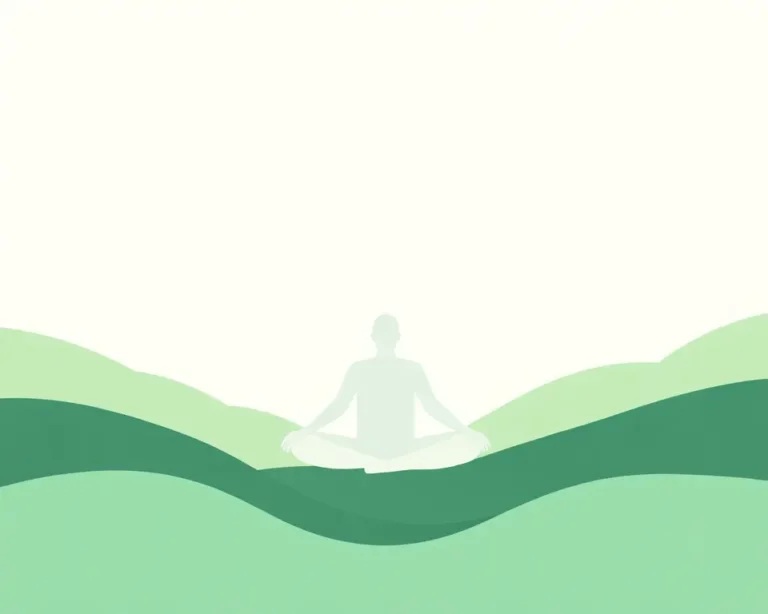According to Dr. Emily Carter, a mental health expert specializing in anxiety management, incorporating simple exercises into your daily routine can significantly reduce anxiety levels. While anxiety disorders are the most common mental health condition in the United States, affecting over 40 million adults, exercise offers a readily accessible and effective tool for managing symptoms.
How Exercise Alleviates Anxiety: The Science Behind the Calm
Regular exercise offers a multitude of benefits for mental well-being, including anxiety reduction. Here’s how:
- Releasing Feel-Good Chemicals: Exercise stimulates the production of endorphins, natural brain chemicals that act as painkillers and mood elevators. These endorphins can create a sense of well-being and counteract feelings of anxiety. (Mayo Clinic)
- Reducing Stress Hormones: Exercise helps lower levels of cortisol, a stress hormone that contributes to anxiety. By regulating hormone levels, exercise promotes a calmer state of mind. (Peloton)
- Boosting Brain Function: Physical activity increases blood flow to the brain, improving memory and cognitive function. Exercise can also stimulate the growth of new brain cells and protect against age-related decline, contributing to sharper thinking and a more positive outlook. (HelpGuide.org, Peloton)
- Distraction from Worries: Engaging in exercise provides a mental break from anxious thoughts and worries. Focusing on physical activity can help interrupt the cycle of negative thinking that fuels anxiety. (Mayo Clinic)
- Improved Self-Esteem: Regular exercise can boost self-confidence and self-esteem. Meeting fitness goals, even small ones, can create a sense of accomplishment and improve body image, leading to a more positive self-perception. (Mayo Clinic, HelpGuide.org)
- Coping Mechanism: Exercise serves as a healthy coping strategy for managing anxiety. Unlike negative coping mechanisms like alcohol consumption or dwelling on negative thoughts, exercise offers a positive and productive way to deal with stress and anxiety. (Mayo Clinic)
- Changes in the Brain: Long-term physical exercise results in changes in the hippocampus, an area of the brain that regulates anxiety. The brains of regular exercisers may respond to stress differently than those who are sedentary. (Peloton)
Types of Exercise for Anxiety Relief: Finding What Works for You
While the specific claim of a 20% reduction from simple exercise needs more context, the wealth of evidence supports that exercise is a powerful tool to manage anxiety. All forms of exercise can benefit mental health, although higher-intensity activities may produce stronger benefits. (MedicalNewsToday). The type of exercise that’s most effective for quelling anxious thoughts and sensations varies from person to person. (Peloton)
- Aerobic Exercise: Activities like running, swimming, cycling, and dancing elevate heart rate and improve cardiovascular health, leading to reductions in anxiety. Aim for at least 150 minutes of moderate-intensity aerobic activity per week. (Mayo Clinic, Peloton)
- Walking: Even a 10-minute walk can do wonders for easing anxiety. Walking is a readily accessible and gentle form of exercise that can be easily incorporated into daily routines. (Peloton)
- Yoga: This mind-body practice combines physical postures, breathing techniques, and meditation to promote relaxation and reduce stress. Yoga has been shown to increase levels of GABA, a brain chemical that elevates mood and decreases anxiety. (Peloton, Good Housekeeping)
- Strength Training: Lifting weights or doing resistance training can reduce tension and improve anxiety. Aim for twice-weekly strength training sessions to reap the mental health benefits. (Peloton)
- HIIT (High-Intensity Interval Training): This type of exercise involves short bursts of intense activity followed by periods of rest. HIIT workouts can be effective in reducing anxiety symptoms for some individuals. (Peloton, Health)
- Breathing Exercises: Simple breathing techniques, such as alternate nostril breathing and pursed-lip breathing, can help slow heart rate, loosen muscles, and normalize breathing, promoting relaxation and reducing anxiety. (MedicalNewsToday, Good Housekeeping)
- Mindful Exercise: Activities like Tai Chi and Qigong combine movement, meditation, and focused breathing to promote relaxation and mental well-being. (Health & Fitness Association)
Integrating Exercise into Your Life: Practical Tips
Here are some practical tips for incorporating exercise into your daily life:
- Start Small: Begin with short exercise sessions and gradually increase the duration and intensity as you get fitter. Even small amounts of physical activity can make a difference. (Mayo Clinic)
- Find Activities You Enjoy: Choose activities that you find fun and engaging to make exercise more sustainable. If you dislike running, try swimming or dancing instead. (Mayo Clinic)
- Make it a Habit: Schedule exercise into your calendar and treat it like any other important appointment. Consistency is key to reaping the long-term benefits of exercise for anxiety reduction. (Mayo Clinic)
- Exercise Outdoors: Whenever possible, exercise in natural settings. Studies show that outdoor exercise can boost vitality, enthusiasm, and self-esteem while reducing tension and fatigue. (Better Health Channel)
- Incorporate Activity into Your Day: Look for opportunities to be more active throughout the day, such as taking the stairs instead of the elevator, walking during lunch breaks, or dancing while doing chores. (Centre for Clinical Interventions)
- Set Realistic Goals: Set achievable goals to avoid feeling overwhelmed or discouraged. Celebrate your progress along the way to stay motivated. (Mayo Clinic)
- Socialize: Exercising with friends or family can provide extra motivation and make the experience more enjoyable. (Mayo Clinic)
- Consult a Professional: If you have underlying health conditions or are new to exercise, consult with a healthcare professional or certified fitness trainer to create a safe and effective exercise plan. (Mayo Clinic)
The Expert Perspective: Exercise as a First-Choice Treatment
Experts increasingly recognize the critical role of exercise in mental health management. Exercise is often more effective than medication for depression and anxiety. (MedicalNewsToday, University of South Australia). Physical activity should be viewed as a first-choice treatment for people living with mental health issues. (MedicalNewsToday)
Important Considerations
- Exercise is not a replacement for therapy: While exercise can be a valuable tool for managing anxiety, it’s essential to seek professional help if you have an anxiety disorder or are experiencing significant distress.
- Compulsive exercise: Be mindful of the potential for compulsive exercise, especially if you have a history of eating disorders or tend to rely on exercise as your sole coping mechanism.
Conclusion
While the specific reduction of 20% requires further context, incorporating simple exercise into your daily routine offers a powerful and accessible way to reduce anxiety and improve overall mental well-being. By understanding the science behind the calming effects of exercise and finding activities that you enjoy, you can harness the transformative power of movement to cultivate a calmer, more resilient mind. Remember to consult with healthcare professionals for personalized advice and support.







